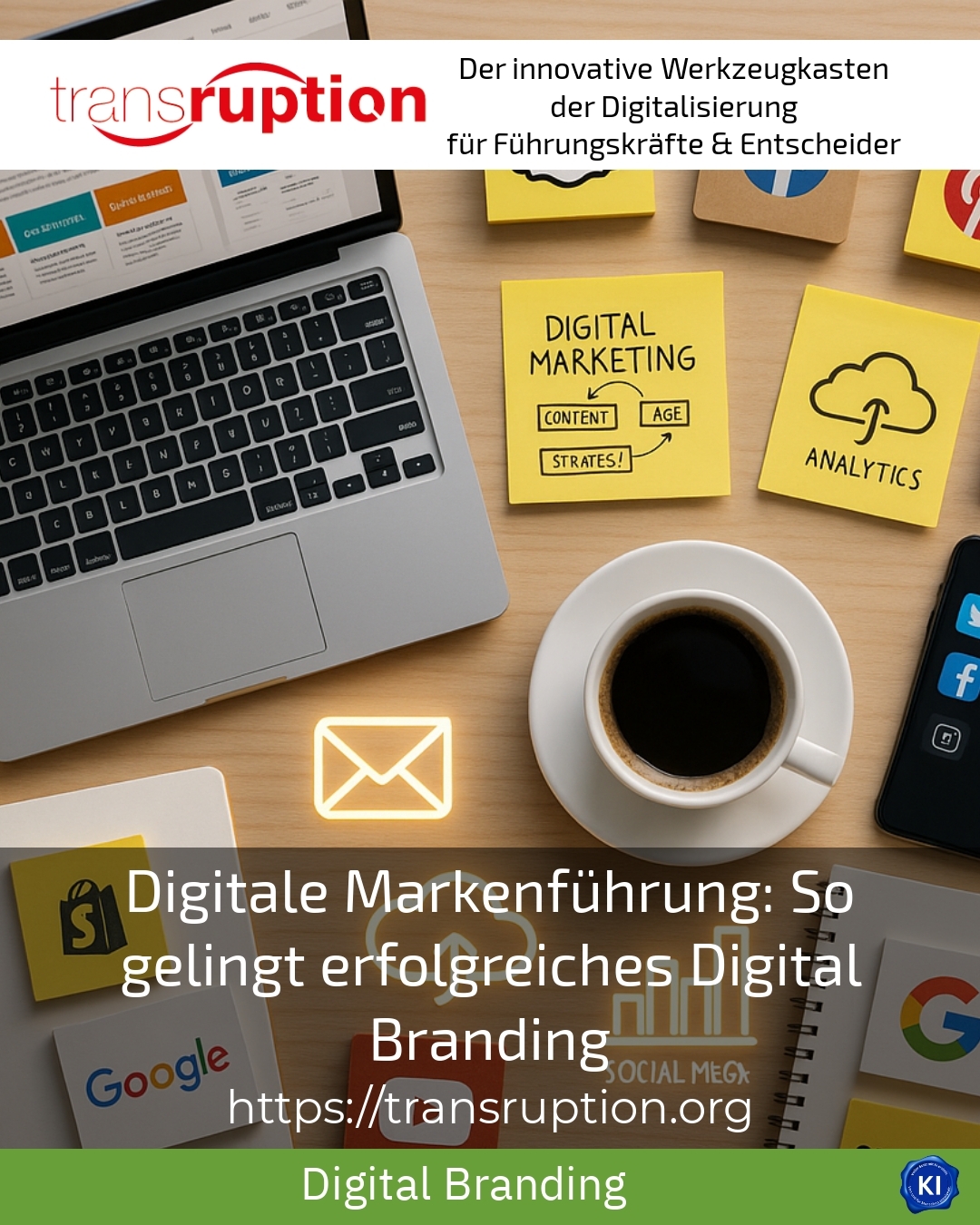Digital brand management** is becoming increasingly important in today's business world. It helps companies to effectively establish their brand identity not only offline, but also in the digital space. It ensures consistent brand perception on all relevant channels and offers a wide range of opportunities to target and retain customers. In this article, you will learn how successful digital brand management works, which strategies have proven successful and how you can overcome typical challenges.
Understanding the basics of digital brand management
Digital brand management encompasses the definition, establishment and further development of the brand in the digital environment. Unlike traditional brand management, factors such as multi-channel communication, real-time interaction and user-centricity play a central role here. Companies must realise that their brand must be experienced everywhere today - on the website, in social networks, by email or on mobile apps. This is how they create a comprehensive and emotional connection with their target groups.
A key aspect is adapting to the digital communication landscape, which is characterised by temporal and spatial independence. Brand messages must be flexible and tailored to the respective platform. At the same time, this requires an innovative content strategy and constant dialogue with the community. Agile methods, such as those practised by Spotify, support a rapid response to customer feedback and market changes.
BEST PRACTICE at the customer (name hidden due to NDA contract) An international lifestyle company integrated digital feedback tools into its social media channels, significantly increasing user interaction. Thanks to the immediate integration of customer requests, brand communication could be adapted in a targeted and timely manner, resulting in measurably stronger customer loyalty.
Strategies for successful digital brand management
Effective digital brand management requires clear positioning and a stringent brand identity. Several proven strategies are suitable for implementation:
- Omnichannel approach: Successful brands such as Lego impress with the seamless interaction of all digital and analogue channels. Customers can shop on the website, consume content on social media and interact via mobile apps without any disruption to the brand experience.
- Content marketing and storytelling: Authentic and target group-orientated content promotes brand perception. For example, IKEA uses informative videos and interactive contributions to present its innovative strength and build long-term customer relationships.
- Personalisation with the help of data analysis: The customer experience can be improved through the targeted collection and analysis of user data. Starbucks shows how personalised offers and a digital loyalty programme can strengthen customer loyalty.
These strategies support companies in successfully putting digital brand management into practice. It is important to integrate the various measures into a holistic and consistent brand strategy.
How modern technologies support digital brand management
Technological innovations offer exciting opportunities to make a brand digitally tangible and interactive. Augmented reality (AR) and artificial intelligence (AI) open up new dimensions in customer dialogue. Sephora demonstrates this impressively by enabling its customers to test products virtually. This creates a personalised shopping experience that merges online and offline.
Messaging services and chatbots are also playing an increasingly important role, as they enable fast communication and personalised service. This allows companies to respond directly to customers' needs and questions and build emotional brand loyalty.
BEST PRACTICE at the customer (name hidden due to NDA contract) A telecommunications provider used AI-supported chatbots on its website to advise prospective customers around the clock. The increased availability not only increased customer satisfaction, but also significantly improved the conversion rate.
Typical challenges and how to overcome them
Many companies report that they find it difficult to adapt quickly to digital processes. Target group behaviour and trends are constantly changing, which makes planning more difficult. Added to this is the complexity of data analysis and the resources required for continuous brand management.
Professional support, such as transformation coaching, provides impetus and provides targeted guidance through digital brand management projects. This reduces obstacles and ensures a strategic direction that is customised to the individual context.
BEST PRACTICE at the customer (name hidden due to NDA contract) A medium-sized B2B company benefited from external consulting and coaching. This anchored the digital brand strategy in the company and strengthened internal expertise in the long term. Digital visibility increased demonstrably, resulting in new business contacts and orders.
My analysis
Digital brand management** is an indispensable component of successful corporate communication today. It helps companies to present their brand in a modern, flexible and target group-orientated way. The mix of content, technology and interaction ensures an emotional connection and offers numerous opportunities to increase visibility and competitiveness. It is important to take a comprehensive view that dovetails online and offline worlds and focuses on sustainable brand values. External support can provide valuable impetus here and promote the transformation process.
Further links from the text above:
[1] Digital brand management with the WCG
[2] 10 companies with successful digital marketing concepts
[3] Digital brand management - definition and overview
[4] Digital branding: how it works and what to consider
[5] Brand management: basics & strategies
[6] Ten examples of digital marketing campaigns
[7] Digital brand management - Marketing Institute
[8] Successful digital transformation: Starbucks
For more information and if you have any questions, please contact Contact us or read more blog posts on the topic TRANSRUPTION here.















